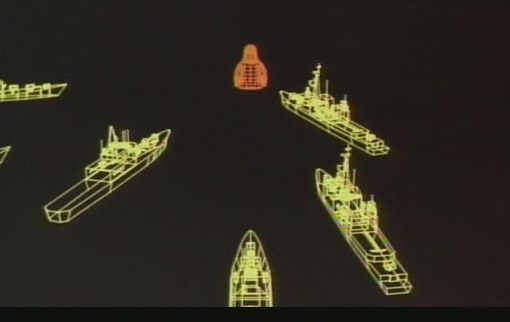Godzilla vs. Biollante
aka Gojira vs. Biorante

1989![]()

Directed by Kazuki Omori
Written by Shinichiro Kobayashi and Kazuki Omori

The origins of Godzilla vs. Biollante are not what is usual for a Godzilla film (with the possible exception of Godzilla vs. Megalon) In 1986 Toho held a contest to write the next chapter in the Godzilla saga. The eventual winner was a dentist named Shinichiro Kobayashi, who came up with a concept about the mutant plant, dead scientist’s daughter, and the psychic girl. The final product is radically different in the other parts, as Shinichiro Kobayashi’s original script also included a rat/fish hybrid monster named Deutalios. The plot also echos parts of the Ultra Q episode The Mammoth Flower, in that there is a giant flower with wacky tentacles. In an interesting side note, the second place winner of the story competition was an entry titled Godzilla 2 by American Jim Bannon, which is set in the future and had a super computer that creates battle machines to fight Godzilla. Toho eventually to this script, yanked the Godzilla out of it, and turned it into the 1989 movie GUNHED. Toho considered using the GUNHED computer to fight Godzilla in subsequent Heisei films, but as we know that never happened.

Since I am mentioning the term Heisei, I might as well explain what it is for those of you who aren’t Gojiraphiles. There are three main eras of Godzilla films. The original series is the Showa series and runs from the original film in 1954 until 1974’s Terror of Mechagodzilla. The second series is known as the Heisei series after the Emperor of Japan during the bulk of the series. It began with Godzilla 1985 (aka Return of Godzilla) and ran through 1995’s Godzilla vs. Destoroyah. The third series was the Millennium Series, which started with Godzilla 2000 and ran through Godzilla Final War.

|
|
Scientist labor to find out if Mister Muffins or Whiskers was the feline who yakked on the couch
|
Miki Saegusa will become a recurring character throughout the Heisei series. A psychic girl who has a link with Godzilla, she comes in useful when Godzilla resurfaces and causes trouble. Miki starts out as a young girl here (and is really dressed down as a child compared to the later movies where she will be presented more grown up) and matures as the series goes on. An occurring character in so many movies is a rare thing in Godzilla films, and she helped string the Heisei films into a more cohesive group. She is played by Megumi Odaka, who has retired from acting around 2000 and dropped out of public view shortly afterward. Rumors have swirled of illness, but as to what she has been up to it is anyone’s guess.

Biollante represents mankind’s arrogance, which is a theme the film will beat over your head again and again. Yes, we get it, mankind is arrogant and playing God and all that stuff. We know this from the other Godzilla films that say some of the same stuff. So getting an extra layer of shame cake is not a pleasant desert. The next film gets all preachy as well, but about totally different things. As many of the live action sequences are completely forgettable, much of the preaching falls on ears that won’t remember it 90 minutes later. The human story here switches from scientists and ethical dilemmas to terrorist countries and their goons to psychic schoolgirls to untested military officers. It is like four stories in one, plus the monster action. The film debuted dubbed on video and cable in the US, though I have a copy of a Japanese version which will be used in the review. As far as I know there is no real difference.

|




